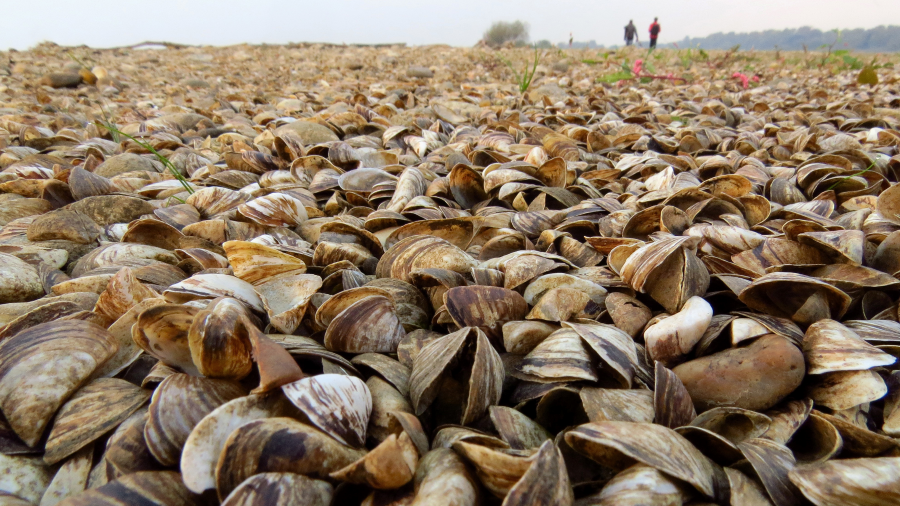
A downloadable version of this lesson is available here:
Ecologists traditionally have defined non-native species as those that have not evolved in or historically lived in a geographic region. Only a small subset of these species is also invasive, but when they are, they can outcompete native species and cause extinctions or extirpations, as well as detrimental changes in ecosystem level processes such as nutrient cycles and hydrology. For this reason, many ecologists have emphasized the need to control non-native species and have promoted growth in the field of invasion biology. This is the study of when and why non-native species become invasive and the best practices for limiting their spread or removing them. Some scholars, including those from diverse fields, have raised concerns that the growth of invasion biology has bolstered the assumption that all non-natives are bad (invasive), and thus there is a need to control and/or eradicate them. These scholars argue that this assumption is problematic because many non-native species are quite valuable from a human-centered perspective and non-native assemblages are inevitable, given the pace of global change. Such arguments often come up in the context of ecosystem restoration and the concept “novel ecosystems”—both are the explicit focus of lessons that could be tied to this one.
This lesson is structured as a formal debate between camps concerned over the need to control non-native species vs. those focused on their value. Two teams will argue their points, and a science advisory board (SAB) will evaluate the outcome seeking some common ground. The SAB will also lead a discussion of even broader perspectives on the topic that come from individuals with the diverse disciplinary and sector backgrounds that seek to study and solve socio-environmental problems.
- Gain detailed knowledge about the hot button issue of non-native and invasive species.
- Research and articulate the two perspectives and argue for a particular position.
- Anticipate and address counterarguments to learners’ assigned positions.
- Explore deeper issues of how values as well as disciplinary and sector perspectives influence thinking and stances on the importance and potential management of non-native species.
Control or Embrace Non-native Species Debate (Two sessions, each 50–75 min.)
The length of each session can vary depending on how long the instructor allows for discussion. Prior to the first session, learners should carefully read two articles: Simberloff (2015) and Schlaepfer (2011). They should pay special attention to the way researchers present the non-native and invasive perspectives, including bias, emotion, and subjectivity that may affect the tone and understanding of the underlying science. They should note specific examples that may help them articulate their position. Learners do not yet know which side they are on for the debate.
Session 2. Debate Day
The actual debate varies in length (30–40 min.) depending on the total time allocated for the class session (50–75 min.). In advance of the session, the instructor should prepare the debate stage with two long tables open toward the audience and SAB.
-
(5 min.) Once participants arrive, review the debate rules and structure. Allow debate groups to briefly consult and bring up visuals and oral debate materials.
-
(30–40 min.) Conduct the debate. Instructors should keep time and order over the proceedings as outlined in the previous session.
-
In the final 15 min., invite the SAB to:
Present comments on each team’s debate performance
Lead a discussion related to the core themes and the questions they developed prior to the session
Remark on the roles of history, climate change, and philosophies of restoration that further enrich the class’s understanding of this complex issue
Articulate the potentials of a middle ground and show how it features ideas from both sides.
-
As an option, continue the conversation by requiring debaters and the SAB to post reflections using the class’ online discussion board. Learners might consider what went well and what could be improved in the debate itself, or they may extend the concepts by musing on additional case scenarios relevant to the issues discussed.
-
Can Invasive Species Ever Be Good?
For decades, biologists have warned of the consequences of introducing alien organisms into new ecosystems, but some researchers’ studies have suggested that certain alien species may actually help ecosystems. This article explores both sides of the debate among invasion scientists and the push for greater data acquisition about non-native species’ positive and negative impacts to inform management decisions.
Elbein, A. (2022, October 2). Can Invasive Species Ever Be Good? The Atlantic. https://www.theatlantic.com/science/archive/2022/10/invasive-species-help-ecosystem-wildlife/671626/
-
Fruit quantity of invasive shrubs predicts the abundance of common native avian frugivores in central Pennsylvania
Biological invasions threaten global biodiversity, but they can also create positive ecological relationships and services, which can sometimes result in challenges for conservation efforts. For example, non-native plants can form mutualisms with nativefruit-eating—and consequently, seed-dispersing—birds. This article looks at such a relationship between honeysuckle plants and bird communities in central Pennsylvania.
Gleditsch, J.M., & Carlo, T.A. Fruit quantity of invasive shrubs predicts the abundance of common native avian frugivores in central Pennsylvania. Diversity and Distributions, 17(2), 244-253. https://doi.org/10.1111/j.1472-4642.2010.00733.x
-
Invasion Biology: Specific Problems and Possible Solutions
Though biological invasions are one of the major global causes of biodiversity loss, the field of invasion biology faces regular criticism and faces a lack of progress.. To address these issues, this article’s authors outline 24 specificities and problems of this discipline. They then categorize those items into four groups: understanding, alerting, supporting, and implementing the issues associated with invasive alien species, offer solutions to tackle these problems and advance the field.
Courchamp, F., Fournier, A., & Bellard, C. (2017). Invasion Biology: Specific Problems and Possible Solutions. Trends in Ecology and Evolution, 32(1), 13-22. https://doi.org/10.1016/j.tree.2016.11.001